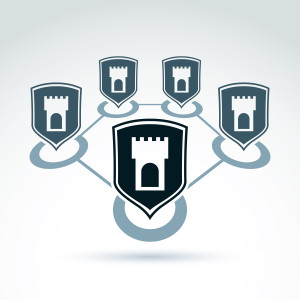October 6, 2015
Celling Security
Security Stuff
What could be more important than security? Well, okay, lots of stuff. And, when you think about it, all that other stuff like anonymity, privacy, the kids, income, your FICO score, and your favorite cocktail done correctly each and every time—and like a cocktail, the amount of ingredients could be sizable—are all about comfort and peace of mind AKA security.
Fortresses, Moats and Minefields
As cyber threats increase, so must data security. Organizational plans to foresee and prevent attacks are of critical importance and need to be fluid for rapid response. Data security must be assessed in all levels of the organization. Whether you know it or not, a third of all hack attacks result from employees’ (management included) curiosity by downloading and opening pernicious information. Curiosity kills cats and hijacks data but to squash employee curiosity is to kill an organization by negating its greatest asset, innovation. So, organizations live in fortresses with rather permeable walls. Their data is ‘guarded’ ceaselessly in the organizations deepest holds and no matter how many precautions taken, how many attacks they repel, eventually the villains will be victorious, followed by press releases and apologies by the vanquished victims. If only… No matter how stringent HIPPA requirements are, all those medical records vaulted on your super secure servers are as equally vulnerable to hackers as the corporate handbook.
Maybe what’s needed is a new way to think about security. Instead of thinking fortress, think terrorist. Instead of buttressing firewalls and maintaining moats and minefields to protect your fortress and the data within, think guerrilla, think cells. In other words, why must we keep all data together in the deepest hold in a single fortress that’s besieged?
Celling Data Security
To thwart hackers, why not break up data into separate pieces and move the separate pieces of data into external cells—external secure cloud servers–linked only to the organization and accessible for any authorized user. Think about it. Hackers breaking into the US government personnel office and stealing personal information of approximately 4 million federal workers. Yikees!
I’d bet all those gov’t black ops folks would feel safer if the government stored their SSNs on one cloud server, their names on another and their addresses and other sensitive information on still other external servers. Then when the personnel office was hacked, the hackers might have only gotten away with a list of SSNs or names or other individual pieces of info instead of the whole shebang. Celling data on secure cloud servers could have prevented the massive data heist by either alerting fortress’ defenders to the hack in progress and/or for the hackers to break into each cell to extract the data that the assault becomes too complicated and too time consuming.
Surely, your organization is on the ball and has instituted the latest, greatest security protocols so how does the government theft relate to your organization’s data security and in particular to your clients or patients medical records, you bemuse? Simple. By storing all medical records on an external secure cloud, even if your company is hacked by the CEO’s teen, DHS or a gov’t black operative, your clients or patients private information remain safe, secure and readily accessible.
Privacy and identity security are one of Record Grabber’s core tenants. Foil the villains by enlisting recordgrabber.com and maybe you’ll hear them villains shouting. “Curses, foiled again.”
Stay in the loop!

Get important updates, special offers, and more. Sign up today!


